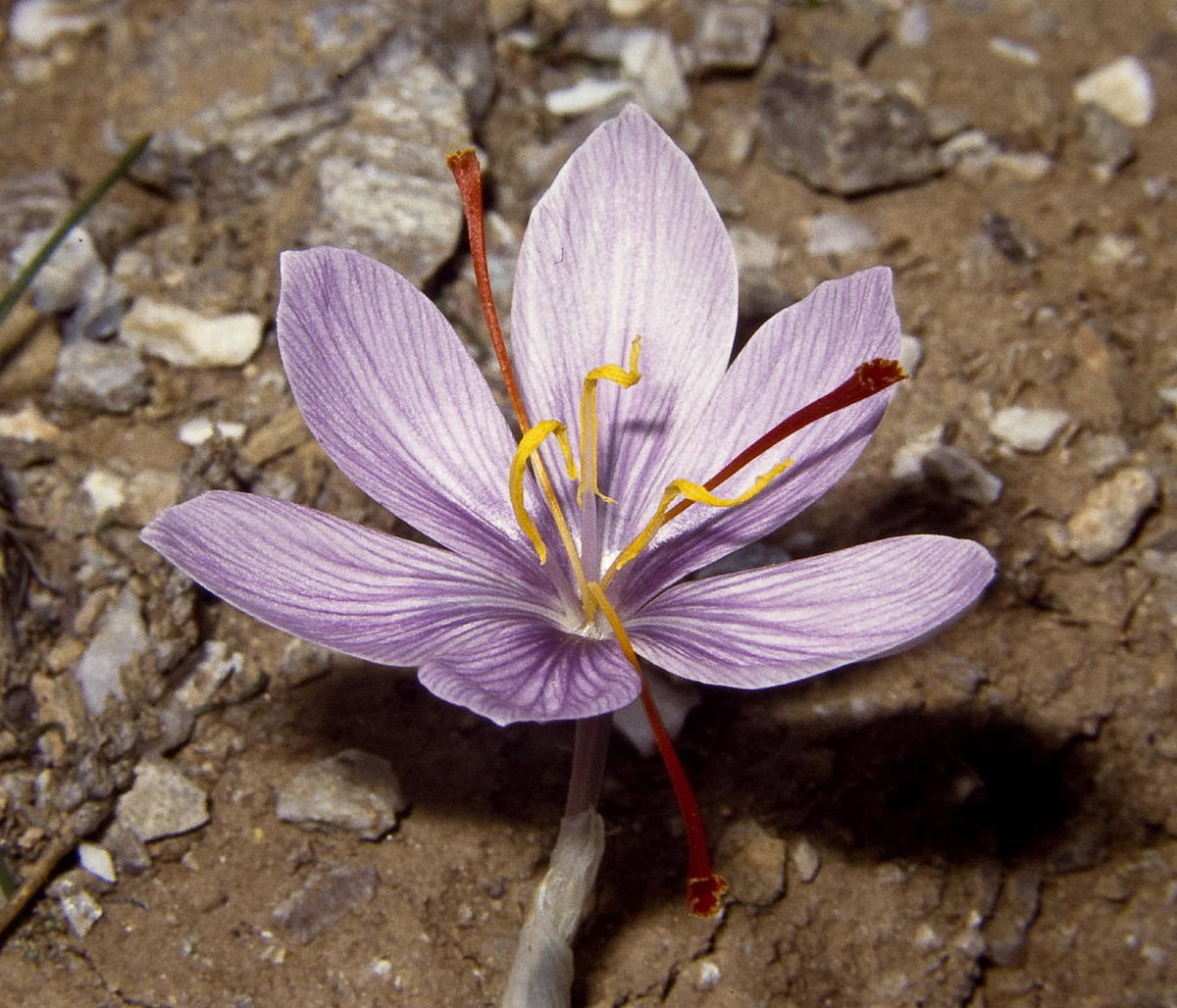Crocus cartwrightianus
(Crocus cartwrightianus)

Description
“Pet poisonous” – Toxic parts: entire plant Crocus cartwrightianus is a species of flowering plant in the family Iridaceae, native to Greece and Crete. It is a cormous perennial growing to 5 cm (2 in). The flowers, in shades of lilac or white with purple veins and prominent red stigmas, appear with the leaves in autumn and winter. The Latin specific epithet cartwrightianus refers to the 19th century British Consul to Constantinople, John Cartwright. C. cartwrightianus is the presumed wild progenitor of the domesticated triploid Crocus sativus – the saffron crocus. It probably appeared first in Crete. An origin in Western or Central Asia, although often suspected, has been disapproved by botanical research. This species is commonly found growing on limestone soil areas of the Attica Peninsula of Greece. There is evidence that this plant was cultivated in ancient Crete at least as early as the Middle Minoan Period, as exhibited by a mural, the "Saffron Gatherer", illustrating the gathering of crocuses. This plant, and the cultivar 'Albus' (with pure white flowers), have gained the Royal Horticultural Society's Award of Garden Merit.
Taxonomic tree:







